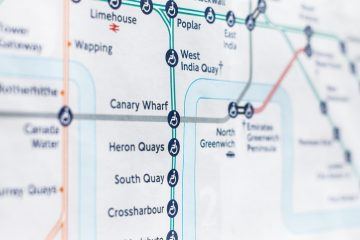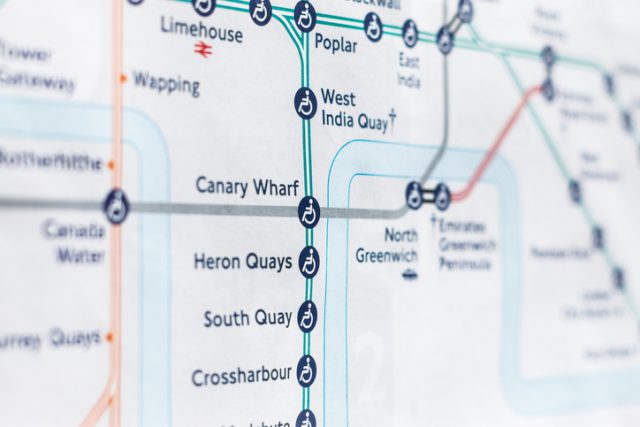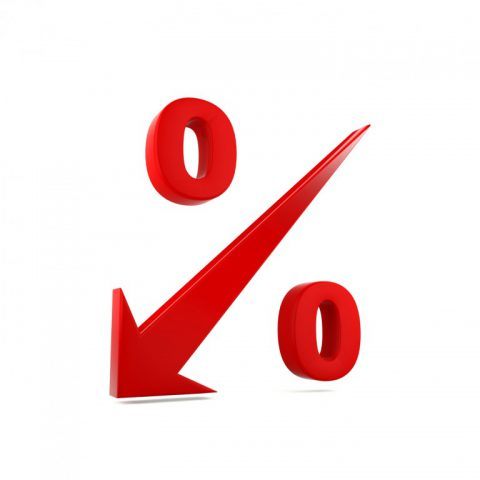Average UK House Price 6.05 Times Typical Earnings
The average UK house price is currently 6.05 times the typical earnings in the country, according to the latest research by leading hybrid estate agent eMoov.co.uk.
The agent also found that there is an average gap of £6,111 between the current typical wage and the wage required for a general mortgage approval of 4.5 times the borrower’s salary.
eMoov compared the latest Land Registry house price figures with the recently updated Office for National Statistics wage data, to highlight where across the UK presents the greatest obstacle for aspiring homebuyers, both in terms of the wage to house price ratio, and the reality gap between the average wage available and the wage required to secure a mortgage in each area.
The average property price was divided by the typical earnings to find the wage to house price ratio for each area. eMoov then calculated the mortgage deficit by deducting a 10% deposit from the average house price, before dividing it by 4.5 – the standard multiple of a salary required for mortgage approval. The agent then worked out the difference between the average salary in each area and the salary required to purchase a property at the average house price for that location.
The full data is available here.
The worst locations by average wage to average property price
With London house prices continuing to spiral out of control it is no surprise that – with the exception of Purbeck in Dorset – the areas for the worst house price to earnings ratios are in the capital. It is by far the worst region in the UK, with the average house price standing at 12.05 times the typical wage.
Hackney is the worst borough, with the average house price of £575,511 a huge 17.03 times the average wage of £33,800. Brent (16.37) and Haringey (16.21) are also home to an average property price over 16 times the typical wage in the area.

Average UK House Price 6.05 Times Typical Earnings
Waltham Forest (15.69), Ealing (14.77), Harrow (14.73) and Barnet (14.18) are amongst the other worst offenders, while Purbeck is the only non-London entry in the top ten, at 14.12.
Hammersmith & Fulham (14.06) and Newham (13.18) complete the top ten worst locations.
Outside of London, the gap closes slightly, although all of the areas in the top ten are home to house prices of more than 12 times the average earnings.
After Purbeck, the worst area is Oxford, where the average house price of £408,488 is 13.18 times the typical salary of £31,000. South Bucks (13.08), Hertsmere (12.95), Three Rivers (12.81), South Hames (12.65), Broxbourne (12.53), Christchurch (12.47), Epsom and Ewell (12.44), and Brighton and Hove (12.43) complete the top ten worst areas outside the capital.
The worst locations by gap in earnings for mortgage requirements
As with the wage to house price ratios, the top ten worst locations where the gap in earnings for mortgage requirements is concerned are all in London, with the exception of one.
Despite having some of the largest wages on offer in the capital, the high price of property in Kensington and Chelsea, Westminster and Camden means that the gap between the average wage on offer and the wage needed to secure a mortgage is over £100,000 – £162,086, £131,126 and £106,138 respectively.
Hammersmith & Fulham (£99,476) and Hackney (£81,302) are also home to some of the largest deficits in London, while South Bucks is the only entry in the top ten outside of the capital, with a gap of £79,314 between the average salary and the salary needed for a typical mortgage approval.
Haringey (£77,813), Richmond (£74,924), Islington (£74,530) and Wandsworth (£71,190) complete the top ten.
The best locations by average wage to average property price
At the other end of the spectrum, the ten best areas are home to an average house price under five times the typical wage – although they are, for the large part, located in the north, Wales and Scotland, so not much hope for southern homebuyers.
With the average house price of £80,605 just 3.43 times the average wage (£23,500), Burnley is home to the smallest gap between the cost of buying a home and the available earnings on offer.
East Ayrshire (3.66), Inverclyde (3.67), Blaenau Gwent (3.74), West Dunbartonshire (3.76), North Ayrshire (3.85), Copeland (3.86), North Lanarkshire (3.91), Rhondda Cynon Taf (4.03) and County Durham (4.04) complete the top ten.
The best locations by gap in earnings for mortgage requirements
Burnley again takes the top spot where financial requirements for a mortgage are concerned. The average wage of £23,500 is £7,379 more than the 4.5 times requirement (£16,121) on the average house price of £80,605.
All of the top ten locations exceed the financial mortgage requirements by more than £4,000, but, again, are for the largest part in the north and Scotland.
They are: Copeland (£7,055), Inverclyde (£7,016), East Ayrshire (£6,262), West Dunbartonshire (£6,265), North Ayrshire (£5,819), Blaenau Gwent (£5,305), County Durham (£4,731) and Hartlepool (£4,700).
By region
As mentioned, London is by far the worst region, with the South West (9.55) surprisingly the second worst. The South East (9.50) and the East of England (9.33) are more predictably the next largest ratios. The North East is the best, despite its lower wage, with the average house price of £123,749 just 4.95 times the typical earnings.
London is also home to the largest gap between average wage and the wage needed for mortgage approval, at £55,541, while the North East is the only region with a positive difference, of £250.
The Founder and CEO of eMoov, Russell Quirk, comments on the data: “When London is thrown into the spotlight in terms of the unaffordability of its property market, many are quick to highlight that the wages on offer are higher in the capital. However, this research shows that, despite this, the gap between what hopeful London buyers are earning and what they are having to pay for a property is still way out of kilter and climbing. Not only this, but the reality gap between the average wage and wage required for mortgage approval is staggering. Of course, many of us buy with a partner or friend in order to get on the ladder, but even when sharing this burden, there is still a considerable financial mountain to climb.
“It also shows that, elsewhere around the nation, there is almost a direct correlation between what a property goes for and the earnings on offer. But regardless of where you live and what you earn, there has been a serious unbalance between the escalating price of property and the stagnating wages available to UK buyers. This really needs to be addressed to help current and future UK buyers get a foot on the ladder and continue climbing it.”






